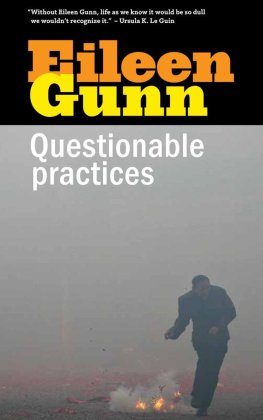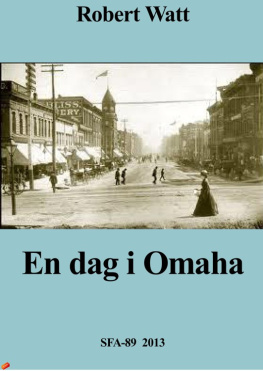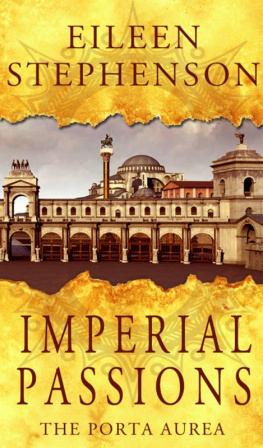Published by The History Press
Charleston, SC
www.historypress.com
Copyright 2021 by Eileen Wirth and Carol McCabe
All rights reserved
All photos are courtesy of Omaha Public Library unless otherwise noted.
First published 2021
E-Book edition 2021
ISBN 978.1.43967.301.0
Library of Congress Control Number: 2021937067
Print Edition ISBN 978.1.46714.845.0
Notice: The information in this book is true and complete to the best of our knowledge. It is offered without guarantee on the part of the author or The History Press. The author and The History Press disclaim all liability in connection with the use of this book.
All rights reserved. No part of this book may be reproduced or transmitted in any form whatsoever without prior written permission from the publisher except in the case of brief quotations embodied in critical articles and reviews.
ACKNOWLEDGEMENTS
Normally we would have a long list of acknowledgements, but this will be short due to researching this book during a pandemic that limited our access to people and places. We hope that despite this major obstacle we have written a book that leads Omahans to explore and better understand their city.
We thank:
Former city planning director Martin Marty Shukert for explaining how the city developed and for helping us select the most important buildings to feature. However, any mistakes or misjudgments are ours, not Martys.
Local history librarians Martha Grenzeback and Lynn Sullivan of the Omaha Public Library, without whose help no one could write any book about local history.
Great Plains Black History Museum director Eric Ewing for his assistance with the North Omaha chapter.
History Nebraska for its website with detailed information about state historical markers.
The Omaha Public Library for its outstanding online local history resources, including photos, and to the Omaha Public Library Foundation that has helped fund their acquisition.
Boys Town and the Nebraska Jewish Historical Society for their assistance.
The authors of books on Omaha history cited in our bibliography.
INTRODUCTION
Omahas history hasnt always been pretty, but its far from dull. And there are reminders of it all over the city, especially in the older neighborhoods east of 72nd Street.
This History Lovers Guide to Omaha will introduce readers to events and landmarks in those neighborhoods that might surprise even lifelong residents. The guide tells the stories of buildings that people pass without a second glance; the people who built the neighborhoods, parks, churches, cemeteries and so much more; and museums and major landmarks.
Our goal is to both entertain and enlighten you about our local history, which is far richer than you might ever imagine.
QUICK OVERVIEW OF LOCAL HISTORY
Omaha began as a rough village on the western bank of the Missouri River and grew into the regions city after becoming the headquarters of Union Pacific Railroad in 1862. The railroad gave Omaha its identity and led to the founding of South Omahas massive stockyards and packinghouses that attracted thousands of immigrant workers. Residents bragged about the smell of money.
Even though that smell is gone with the closing of the packinghouses, it helped define Omahas combination of blue-collar grit with entrepreneurship and wealth that allowed the city to create landmarks ranging from museums, cathedrals and mansions to the world-class Henry Doorly Zoo & Aquarium. Omaha has always been all about making money, whether from meatpacking or high tech.
Historic Capitol Avenue and Trinity Cathedral.
Old Rosenblatt Stadium scoreboard is todays Henry Doorly Zoo billboard. Photo by Mary Plambeck Cook.
South Omahas Union Stockyards drew immigrants.
Get the job done. Make way for progress. If something old gets in the way, tear it down. Only a handful of buildings such as St. Cecilias Cathedral and Joslyn Art Museum are so historically and artistically important that they are off-limits. Theres even a book that tells the story of the historic buildings that Omaha has destroyed.
Omahas current landscape, especially downtown, is a mixture of historic areas and buildings that have been renovated and reused and new buildings, parks and entertainment venues that have transformed the cityscape. Destruction and creation with renovation when it boosts the local economythats the overall story that this History Lovers Guide to Omaha tells. Enough reminders of Omahas past survive to make that story come alive, although often we tell of what used to be in a given location.
Come travel through an Omaha you may have thought you knew until viewing it through the lens of the past.
PLAN OF THE BOOK
As noted, we focus on Omaha east of 72nd Street, envisioning the city map as a jigsaw puzzle with eight pieces. Each segment contains at least one major attraction and tells part of the citys story. Our goal is to give you an overall sense of each area and to highlight things to see and do in each. We focus primarily on state historic markers, museums and historic buildings, and locations including homes, churches, cemeteries and parks, and suggest tours through each puzzle piece. We introduce you to numerous buildings and sites but go into detail on only a few. More information is available online for most. We suggest places worth stopping to see. Each tour is designed for about half a day, but that is flexible depending on number of stops.
It should be noted that we researched and wrote this book during the COVID-19 pandemic, when many historic sites, especially museums, were either closed or operating under limited conditions. As this goes to press in 2021, attractions announce changes regularly. Go to websites for current information.
HOW OMAHA DEVELOPED
Thanks to former city planning director Marty Shukert for his insights into how Omaha grew, on which this overview is based. Any errors are ours, not his.
Physically, Omaha began as a village on the west side of the Missouri River and grew north, south and west because it could not grow east. Its explosive growth to the far west began in the modern era and included annexing formerly independent towns such as Millard and Elkhorn, whose history we do not cover. Until the early 1960s, 72nd Street was something of a western boundary, thus it is the western border of this books focus. We do however include a few important West Omaha locations in one chapter.
















